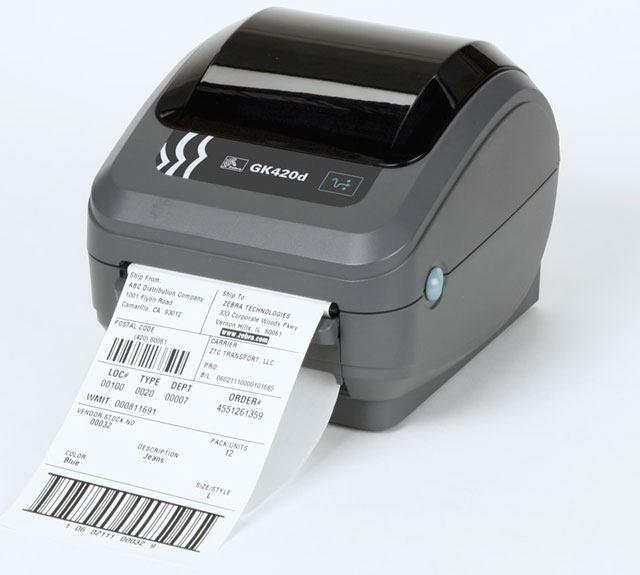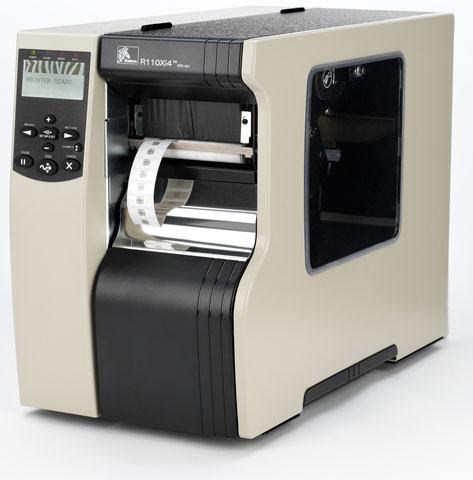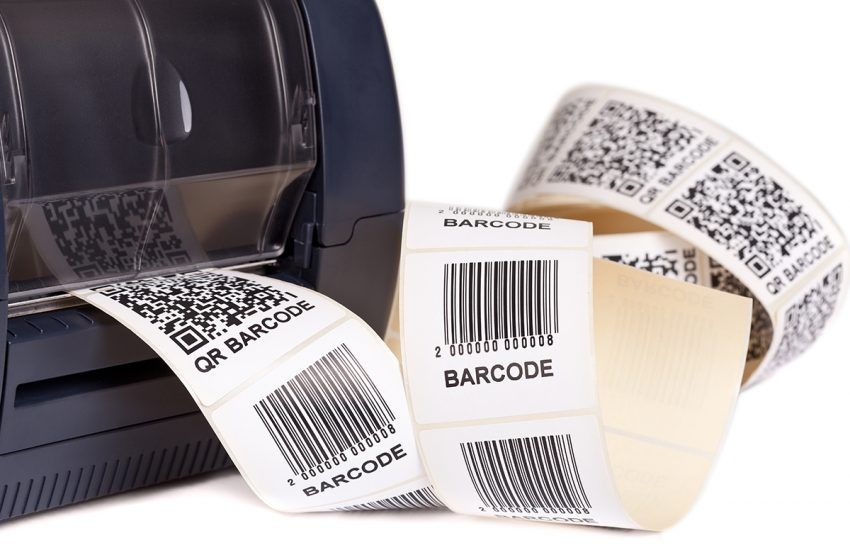There’s much more than price to consider before choosing a barcode printer.
Barcode printers play an essential role in the operation of a warehouse. Although barcode labels don’t represent a significant expense, label problems can have an outsize effect on the flow of goods in and out of a facility — without reliable, easily scannable labels, inventory management, and supply chain operations can grind to a halt.
That’s why it’s vital to select the right type of printer for your warehouse operation. There are two standard options for warehouse barcode printing: desktop models (which are typically smaller and made of durable plastic) and industrial models (which are bigger and have a metal construction.)


For smaller warehouses that have a relatively light print load and operate in a relatively clean environment, desktop printers like the Zebra GK420d can work just fine. Desktop models are also usually less expensive – in some cases, roughly half the price of an industrial printer from the same manufacturer. For higher-volume warehouses and applications where the printer is exposed to dust, dirt or abuse, industrial printers like the Zerba R110xi4 have the edge. But there are other factors to consider as well.
Printing method: Both desktop and industrial printers are available in direct thermal or thermal transfer versions. Thermal transfer labels are highly resistant to fading and can print a wider variety of materials than laser or inkjet printers.
Direct thermal printers are also available for barcode printing applications. These are cost-effective printers because they don’t use ribbons, ink or toner, but they do require specialized labels. The images they produce are also prone to fading and have a shorter lifespan, so they are best suited for receipts, tickets, and some shipping labels, or for printing labels that will primarily be used indoors.
Label size and barcode symbology: Make sure the printer provides support for all of the different barcodes and languages you’ll require, and that you can print the correct range of label sizes. While both desktop and industrial printers offer support for standard label sizes, larger sizes are more likely to be provided with industrial printers.
Accessories: Industrial printers are available with options such as automatic label cutters, peelers, or rewinders that can help streamline the labeling process.
Label volume: For lower-volume applications (a few hundred labels per day) a desktop printer might be more suitable. If you are printing thousands of labels per day, on the other hand, an industrial printer will provide the speed, throughput, and durability required for that type of all-day printing environment.
Label capacity: This is closely related to label volume. Industrial printers use label rolls that may have three to four times the number of labels as a desktop device (depending on label size). That means fewer roll/media changeovers and less downtime on the line. For high-volume labeling operations, that can translate into significant savings.
Label cost: Because of the higher capacity rolls, labels for industrial printers are often cheaper per volume. Companies can save money by buying larger rolls or in bulk. Considering that the average industrial printer can last five to ten years, those benefits are realized over a long period.
On-demand or batch printing: Both types of printers are suitable for on-demand applications, where labels are printed as needed for specific items. If the warehouse must batch print large numbers of similar or serialized labels, however, industrial printers offer suitable throughput and the ability to rewind the preprinted labels onto a core.
Environment: Where will the printer be operated? In a relatively clean, controlled environment, plastic desktop printers provide suitable durability. However, most warehouses don’t fit that description. For dirty, dusty environments where the printers are operating near heavy equipment, industrial printers provide the right level of durability to ensure reliable operation.
Displays: Most desktop printers are small and compact and rely on connectivity to a network or a computer to generate labels. Many industrial models, on the other hand, now offer color touch displays which makes it easy to calibrate and change settings on the printer without the need for a PC. These displays can also be used to alter label types at the point of activity, monitor media use, and perform basic troubleshooting and maintenance.
Memory: An industrial printer also has more memory – 128MB of Flash memory and 128MB of SDRM, for example, compared to 4MB of Flash and 8MB of SDRAM on a typical desktop model. The amount of memory can make a difference when it comes to warehouses that must support and print a wide variety of labels and formats, or that require onboard computing to manage calibrations and settings.
Print speed: A typical desktop model can provide a maximum rate of 102mm or 4 inches per second, compared to an industrial printer with a max print speed of 356mm/14 inches per second. In high-volume warehouses, the boost in speed from an industrial printer has a direct impact on warehouse productivity.
Connectivity: How will the printer connect to your network or computer? Both desktop and industrial printers support parallel/serial ports, WLAN and USB. Industrial printers are more likely to include Ethernet or Twinax/Coax connections as well.
Barcode printing is a mission-critical activity in a warehouse. Taking the time to select the right printer for your environment and your application needs will ensure greater productivity, printer uptime, and higher quality labels.
Do you need help determining which kind of printer (and the specific printer model) that would best meet your company’s business needs? Contact an EMS Barcode Solutions expert via our website today. We’re available via web chat, email or phone, and our friendly and knowledgeable staff is ready to assist you.

